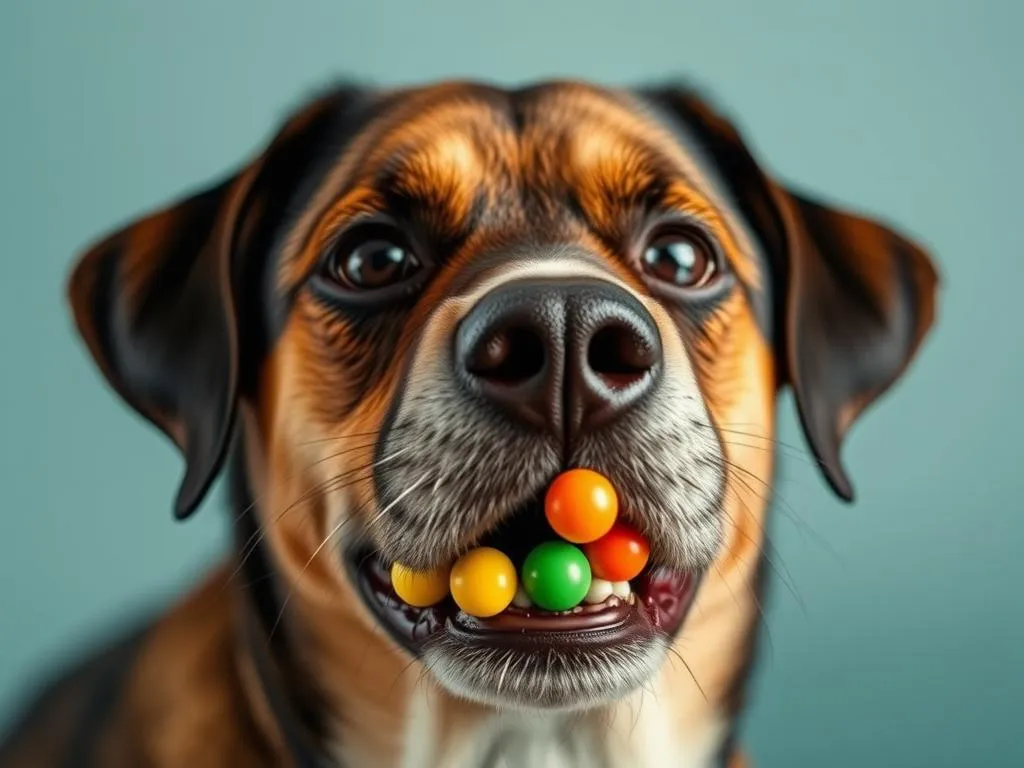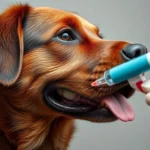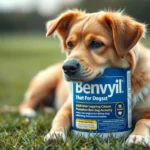
Dog owners often find themselves in a panic when they discover their furry friends have gotten into something they shouldn’t have. One common scenario is when a dog consumes Skittles. Understanding what these colorful candies are made of and the implications of canine consumption is crucial for any responsible pet owner.
Understanding Skittles
What Are Skittles?
Skittles are a popular candy known for their vibrant colors and fruity flavors. They are primarily made from sugar, corn syrup, hydrogenated palm kernel oil, citric acid, and various artificial flavors and colors. Each ingredient plays a specific role in giving Skittles their distinctive taste and chewy texture. However, it’s essential to recognize that while Skittles may be a delightful treat for humans, they are not designed for dogs.
Are Skittles Toxic to Dogs?
The concept of toxicity can vary significantly among different foods. In general, Skittles are not classified as toxic to dogs in the same way that chocolate or grapes are. However, that does not mean they are safe. The high sugar content can lead to health issues, and while none of the ingredients in Skittles are explicitly toxic, they can still cause gastrointestinal upset or other problems if consumed in large quantities.
Potential Risks of Dogs Eating Skittles
Sugar and Artificial Sweeteners
The primary concern with Skittles is their high sugar content. Dogs do not metabolize sugar the same way humans do. Excessive sugar can lead to obesity, dental issues, and even diabetes in dogs. Additionally, while most Skittles do not contain artificial sweeteners, some varieties might, particularly if they are marketed as “sugar-free.” The most dangerous artificial sweetener for dogs is xylitol, which can lead to severe hypoglycemia and liver failure.
Allergic Reactions
Just like humans, dogs can have allergic reactions to certain ingredients in Skittles. Artificial colors and flavors can trigger sensitivities in some dogs, leading to symptoms such as itching, swelling, or gastrointestinal upset. If you notice any unusual behavior or symptoms after your dog has eaten Skittles, it’s essential to monitor them closely.
Gastrointestinal Upset
One of the most common reactions dogs may have after consuming Skittles is gastrointestinal upset. Symptoms can include vomiting, diarrhea, and abdominal pain. These symptoms can vary depending on the amount of Skittles consumed and the individual dog’s sensitivity to sugary foods.
Immediate Actions to Take
Assessing the Situation
If you discover that your dog has eaten Skittles, the first step is to assess the situation. Determine how many Skittles were consumed and the size of your dog. A small dog may experience more significant effects than a larger breed. Keep an eye out for signs of distress, such as vomiting, excessive drooling, or lethargy.
Contacting Your Veterinarian
If your dog has consumed a considerable amount of Skittles or shows any concerning symptoms, it’s crucial to contact your veterinarian immediately. Provide them with as much information as possible, including the amount of candy consumed, the size and breed of your dog, and any symptoms you’ve observed. This information will help the vet determine the best course of action.
Home Remedies (If Applicable)
In cases where a small amount of Skittles has been consumed and your dog is not showing any symptoms, some mild home remedies might help. Encourage your dog to drink plenty of water to help flush out the sugar from their system. Monitor them closely for any signs of discomfort or illness. However, always consult your veterinarian before trying any home remedies.
Long-term Considerations
Preventing Future Incidents
One of the best steps you can take is to dog-proof your home. Keep all candies, including Skittles, out of reach. This includes placing snacks in high cabinets or using child-proof locks on lower cabinets. Educating family members about the dangers of feeding pets human food can also help prevent future mishaps.
Understanding Your Dog’s Dietary Needs
It’s essential to recognize that dogs have specific dietary needs that differ from humans. A balanced diet for dogs typically includes high-quality dog food that meets their nutritional requirements. Treats should be limited to dog-safe options, such as fruits and vegetables, or commercially available dog treats that are specifically formulated for canine health.
Regular Veterinary Check-ups
Regular check-ups with your veterinarian are vital for monitoring your dog’s health. These visits can provide valuable insights into your dog’s dietary needs and help catch any potential health issues early. Discussing the best treats for your dog during these visits can help you make informed choices.
When to Seek Emergency Care
Recognizing Severe Symptoms
While most dogs can handle a small amount of Skittles without any severe consequences, there are specific symptoms that necessitate immediate veterinary attention. These include:
- Seizures: Sudden, uncontrolled muscle contractions could indicate serious health issues.
- Lethargy: Extreme tiredness or lack of responsiveness may signify a more severe reaction.
- Abdominal pain: Whining, pacing, or refusing to eat could indicate gastrointestinal distress.
Emergency Vet Procedures
If you need to take your dog to the emergency vet after they consume Skittles, be prepared for a thorough examination. The vet may induce vomiting if the ingestion was recent or provide supportive care to manage any symptoms. They might also run tests to check for blood sugar levels or other potential complications.
Frequently Asked Questions (FAQs)
Can dogs eat any type of candy?
In general, it’s best to avoid giving dogs candy. Many candies contain ingredients that can be harmful to dogs, such as chocolate, xylitol, and high sugar levels. Always consult your vet before sharing human food with your pet.
What should I do if my dog eats Skittles?
If your dog eats Skittles, assess how much they consumed and monitor for symptoms. If they ate a large amount or show any signs of distress, contact your veterinarian immediately.
Are there any safe alternatives to Skittles for dogs?
Yes, there are many safe treats for dogs! Options include carrot sticks, apple slices (without seeds), or specially formulated dog treats. These alternatives can satisfy your dog’s craving for something sweet without the health risks associated with candy.
Conclusion
Understanding the effects of Skittles on dogs is vital for any pet owner. While they may not be toxic, the high sugar content and potential for gastrointestinal upset make them an unsuitable snack for dogs. By being proactive about pet safety, dog owners can prevent mishaps and ensure their furry friends remain healthy and happy.
Keeping your home safe from tempting treats and understanding your dog’s dietary needs are essential steps in responsible pet ownership. Always consult your veterinarian for personalized advice and guidance tailored to your dog’s specific health needs.









